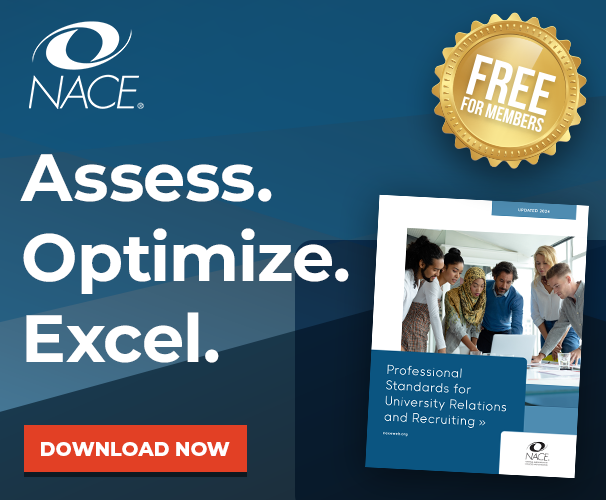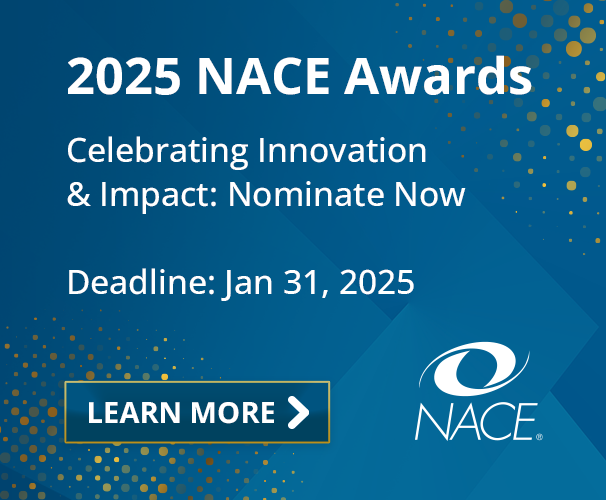1. Build, develop, manage, and maintain campus relationships.
The successful university relations and recruiting program (URR) looks at the long haul, not just short-term results, and is built on strong relationships.
Most URR professionals identify the career center as their “base.” These typically offer career fairs, job posting services, on-campus recruiting, and other options for connecting with students. Plus, career center staff can provide you with intelligence about their campus—its culture and traditions, specifics about their students’ attitudes and behaviors, and such—which you can use to tailor your strategy. Career center staff also can help you develop relationships with other key campus contacts, including faculty and administrators.
The reality is, no program can guarantee job openings for new college grads every year, but organizations achieving greatest success don’t abandon campus when they aren’t hiring. Instead, they find ways to maintain their ties, such as continuing their internship program, taking part in mock interviews, or performing resume critiques, for example. This is where career center staff can be especially helpful: They can tell you what options are open, and what will and won’t work for their campus.
2. Set realistic recruiting goals.
True story: At a meeting, a group of recruiting professionals toted up their respective hiring goals for a specific major, and found that their collective goal exceeded the number of candidates
available. Consider that they represented just a portion of the employers seeking this major, and you’ll see the problem with setting goals that aren’t fact-based. Base your goals on supply, demand, and related factors.How large is
the potential pool? Where are the candidates? Who are your competitors? What are they offering? Do this work upfront, and you’ll be better able to set reachable goals.
3. Choose your target schools carefully.
Most URR professionals say they build their target school list around majors available, quality of programs, experience recruiting at the school, and school location. This requires research
and careful tracking, so you can see which schools are working best for your organization. (The IPEDS database, available through the National Center for Education
Statistics, provides data around degree level, major, student demographics—including race/ethnicity, gender, age, and attendance status—plus degrees conferred, and more.)
A word of caution: In researching which schools offer the majors you seek, be wary of “best schools for” rankings; it’s tempting to use these as a short cut around real research, but be aware that rankings are based on criteria that may not match up with your organization’s needs.
(Note: NACE offers a service to identify schools that match your criteria. For more information, see www.naceweb.org/research/custom/.)
4. Send the right people to campus.
Would you approach a career fair booth if the booth staff looked bored? Would you be impressed by a representative who told you to check the company website to get answers to your questions?
How comfortable would you feel in an interview if the recruiter asked you for a date? Unfortunately, this is how some company reps have behaved on campus.
Don’t take great pains to build a brand only to negate it by sending a “warm body” to campus. Research shows that who you send to campus is critical: Your reps have the most influence on how students view your organization. Send well-trained professionals who are equipped to answer questions, address concerns, represent your brand, and sell your organization.
5. Communicate with students about the process.
Students need to know what the steps are in the selection and hiring process. Keep them apprised of what’s happening, what they can expect, and when they can expect it. Follow
up with students you have talked to at a career fair. Keep in touch with interns after they have returned to campus. Let students know promptly about their status.
6. Measure and analyze your results—and adjust accordingly.
Track how many hires you make, yes, but also track your interview to offer, offer to acceptance, and retention rates. These can help you identify where you’re
having the most trouble, so you can adjust.
For example, a high number of interviews but few offers can tip you off to a problem in screening in candidates for interviews. Is your job description too vague, meaning candidates can’t screen themselves out? Are you unclear about what you want in a candidate? Similarly, if you are extending many offers but getting few acceptances, you can zero in on what’s going on in this part of the process. Where are the snags? Are your salaries competitive? Are you taking too long to extend the offer—and losing candidates to other organizations? (In this case, you will want to gather information from students who have turned you down to identify what went wrong, but you should also find out what prompted acceptance among those who agreed to come work for your organization. Both can be illuminating!) Once you have identified where you are having trouble, you can take steps to adjust your process as possible.
You also want to benchmark against others involved in recruiting new college graduates, to compare “apples to apples.” (For current benchmarks, see NACE’s most recent recruiting benchmarks survey at www.naceweb.org/research/reports/.)
7. Feed your full-time hiring with an internship program.
An internship program is one of the most effective recruiting techniques, helping you build a relationship with potential hires early in their college career (before they
are “on the job market”) and gauge their fit for your organization. An internship program can also help you achieve better retention: Research shows new college hires who have served an internship are more likely to stay with the employer.
(For more on internships, see “15 Best Practices for Internship Programs” at www.naceweb.org/talent-acquisition/internships/15-best-practices-for-internship-programs/.)
8. Use social media to supplement your effort.
Social media is not a replacement for a well-developed campus effort, but can be a helpful supplement—if used properly—not only in reaching and connecting with students
at your target schools but in surfacing talent that doesn’t attend those schools. Neither students nor employers give social media especially high marks as a recruiting tool, but much of that is down to misuse of the tool and unrealistic
expectations about what it can do. Take care to set realistic goals and expectations for your social media efforts, and measure your results periodically to ensure you are getting what you need.
Mimi Collins is director of content strategy for the National Association of Colleges and Employers (NACE). This article is based on insights provided in The Employer’s Guide to University Recruiting and Hiring, published by NACE.




